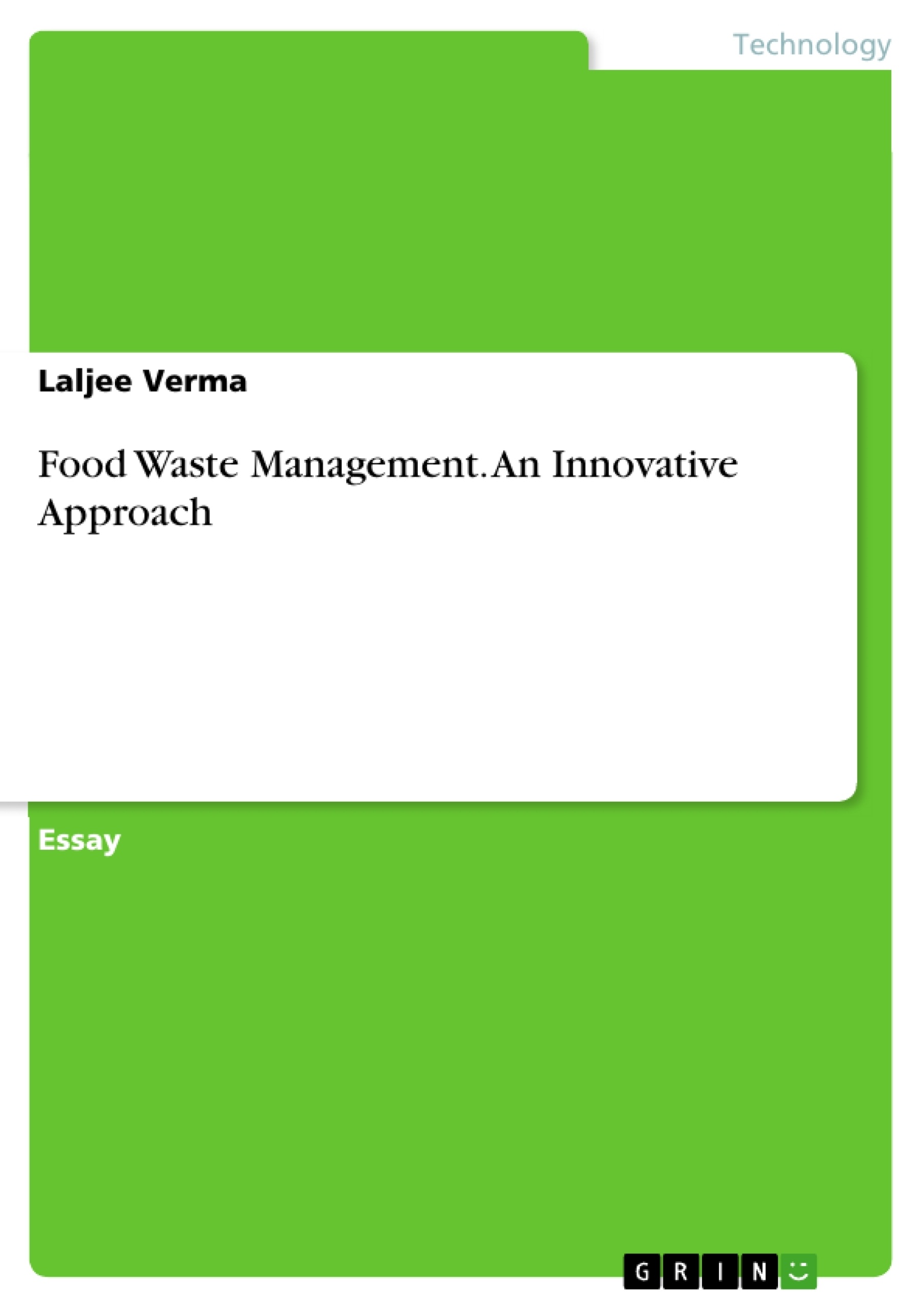Biodegradable component of municipal solid waste (MSW) may vary but generally is about 60 %, and food waste is about 60 % of the biodegradable component. In a city like Delhi, a total of 8000 MT day -1 MSW is generated (CPCB 2012) and food waste may account for about 2700 MT. Food waste is generated by households, hotels and restaurants etc, and market places. Due to deficient collection and ineffective monitoring and control, food waste is thrown on the street and footpaths, eventually being swept away in drains causing choking of drains and eutrophication. Cooked food to the extent of 40 – 60 % is wasted in different countries, and India is no exception. Putrefying food waste attracts flies, rodents, rats, dogs, birds, and all sorts of scavengers, emit foul smell, and causes environmental degradation. Flies are a known vector of many communicable diseases. Birds get attracted to the putrefying waste by itself, as well by the maggots which may breed in the putrefying food waste. Bird hits are a common cause of aircraft disability, including disasters. Current system of collection transportation and disposal by composting has not been successful in any urban locality in India. Composting require large area of land (not easily available). Treated compost by compost machines also require storage for curing for a period, at least for 7-10 days before it can be used as manure. Energy recovery requires sophisticated equipment, and transfer of the waste in shortest possible time so that energy content in food waste does not get dissipated, and may be a factor for climate change. As per Indian rules (MSW Rules 2000), food waste is to be composted and not sent to landfill. Considering the inadequacy in proper food waste management, and its damaging fallout on the environment and human health, a system of food waste management by application of thermal energy, a non- burn process has been developed and tested. Putrefaction process in the food waste is arrested by destroying the enzymes, and the end product can be used as manure or source of fuel, as the treated waste retains nutrients and calorific value. Advantages are that it is environment friendly process; end products are reusable, and the saves on carbon dioxide and methane emission, essential part of burn technology. Being non- burn process it qualifies for carbon credit.
Inhaltsverzeichnis (Table of Contents)
- EXECUTIVE SUMMARY
- INTRODUCTION
- CONCEPT
- MATERIAL AND METHOD
- Material
- Methodology
- FINDINGS AND DISCUSSION
- CONCLUSION
- ACKNOWLEDGEMENT
- REFERENCES
Zielsetzung und Themenschwerpunkte (Objectives and Key Themes)
This paper presents a novel approach to managing food waste, a significant environmental and health concern. It aims to introduce a thermal energy-based, non-burn process for treating food waste, offering an environmentally friendly and efficient solution.
- The environmental impact of food waste, including eutrophication and greenhouse gas emissions.
- The inadequacy of traditional food waste management methods, such as composting and landfill.
- The development and testing of a non-burn thermal treatment process for food waste.
- The advantages of this approach, including reduced environmental impact, resource recovery, and carbon credit potential.
- The potential for widespread implementation of this technology.
Zusammenfassung der Kapitel (Chapter Summaries)
- EXECUTIVE SUMMARY: This section highlights the problem of food waste, its environmental impact, and the need for a more effective management solution. It introduces the concept of a non-burn thermal treatment process for food waste as a potential solution.
- INTRODUCTION: This section provides a detailed overview of the food waste problem, including its scale, sources, and environmental consequences. It discusses the limitations of current waste management practices.
- CONCEPT: This section outlines the proposed solution: a non-burn thermal treatment process for food waste using a machine called VEGMA FOODSTER. It explains the process, its advantages, and its potential for reducing environmental impact.
- MATERIAL AND METHOD: This section describes the materials used in the construction of the VEGMA FOODSTER machine and the methodology used to test its effectiveness in treating food waste. It details the process of collecting food waste, operating the machine, and analyzing the results.
Schlüsselwörter (Keywords)
This work focuses on the critical issue of food waste management, exploring the use of thermal energy as a non-burn technology to address the environmental and health challenges associated with food waste. Key concepts include municipal waste, biodegradable components, putrefaction, eutrophication, carbon credit, and the development and testing of an innovative machine for food waste treatment.
- Quote paper
- Laljee Verma (Author), 2017, Food Waste Management. An Innovative Approach, Munich, GRIN Verlag, https://www.grin.com/document/369733



